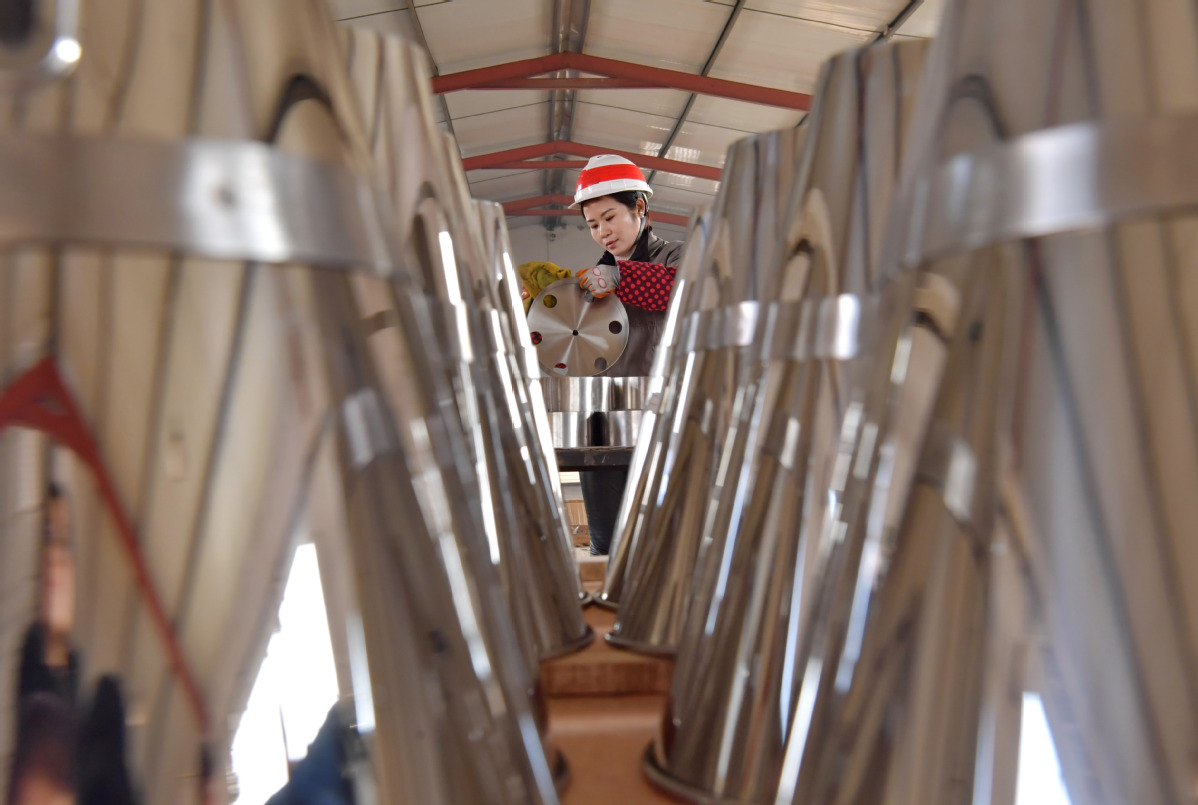Industrial output poised for more gains
China's industrial output exceeded 30 trillion yuan ($4.46 trillion) for the first time last year, with a notable rebound in industrial investment, which signals a rise in confidence toward the country's manufacturing sector, according to a top industry regulator.
China's industrial output exceeded 30 trillion yuan ($4.46 trillion) for the first time last year, with a notable rebound in industrial investment, which signals a rise in confidence toward the country's manufacturing sector, according to a top industry regulator.

A technician works on the production line of a packaging equipment maker in Luanzhou, Hebei province. [Photo/Xinhua]
Investment in manufacturing increased by 9.5 percent year-on-year last year, the highest growth rate since July 2015, Miao Wei, minister of industry and information technology, said at a news briefing on Tuesday.
Among this spending, Miao noted that nearly half of it is investment in improving technologies rather than expanding production scale, and that over 70 percent were private investment.
"The growth momentum demonstrated the country's desire for future (industrial) development as this investment will help to improve industrial and product structure and will move the country to the mid to high-end of the global value chain," said Miao.
Thanks to the robust performance of manufacturing investment, overall industrial investment expanded 6.5 percent year-on-year in 2018, which was 2.9 percentage points higher than the previous year.
Cheng Shi, chief economist at ICBC International, pointed out that the country's manufacturing investment is optimizing its structure significantly.
"It is moving from traditional industries to high-tech and strategic emerging industries, which, in turn, drive high-quality productivity as well as high-end development of the manufacturing sector," he said.
Output in the high-tech manufacturing and equipment manufacturing industry last year soared 11.7 percent and 8.1 percent respectively, higher than overall industrial growth.
Despite a string of good industrial results, the automotive industry, an important part of the nation's industrial output, saw declines in production and sales last year.
Retail sales of passenger cars in China fell 5.8 percent in 2018 to 22.35 million, the first annual fall since 1990, according to the China Passenger Car Association.
Amid such challenges, Miao expressed confidence in the future prospects of China's automotive industry, given that the sector is undergoing restructuring and upgrading, and that new energy vehicles maintained their growth trend last year.
Last year, 1.26 million new energy vehicles were sold in China, up 61.7 percent year-on-year, and the figure is expected to reach 1.6 million vehicles this year, according to the CPCA.
To revive future growth, the ministry also said on Tuesday that it and other ministries would step up the introduction of polices to promote the development of the automotive industry.
These policies include accelerating the renewal of old vehicles, improving the second-hand vehicle market and promoting car consumption in rural areas.
"We will also further our efforts to create better road conditions to lay the foundation for autonomous and unmanned driving tests," he added.
Ouyang Minggao, an NEV expert and an academician of the Chinese Academy of Sciences, said at a forum that lithium-ion batteries and fuel cell technology will become mature and the prices of new energy resources will see a turning point in the near future.
The ministry noted that it has pledged to fully open the automobile sector by 2022, as part of China's broader efforts to further promote its opening-up by granting more access to foreign investors in the manufacturing sector.
Bai Ming, a researcher at the Chinese Academy of International Trade and Economic Cooperation, said China is welcoming foreign and private enterprises to enter more key sectors, which will inject new vitality into the country's industries.
According to the ministry, further opening-up policies will focus on sectors including planes, ships, automobiles and telecommunications.

